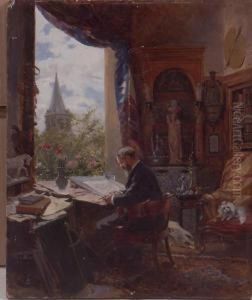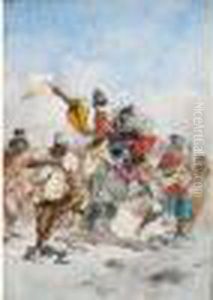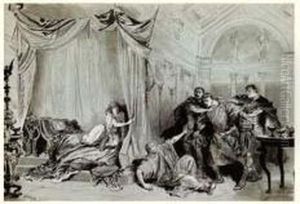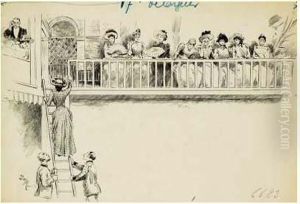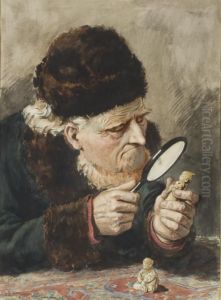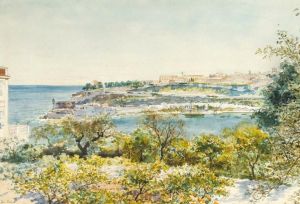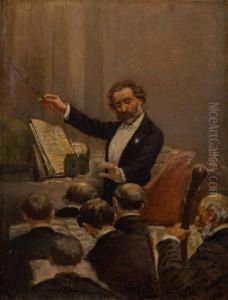Adrien E. Marie Paintings
Adrien E. Marie, born in 1848 and passing away in 1891, was a French illustrator and artist known for his detailed and evocative work during the late 19th century. His career unfolded during a vibrant period of art in France, characterized by the emergence of Impressionism and the continuation of traditional academic art practices. Despite the overshadowing fame of contemporaries like Claude Monet and Edgar Degas, Marie carved out a unique niche for himself, primarily through his illustrations for books and magazines.
Marie's early life was immersed in the cultural milieu of Paris, where he was exposed to the rich artistic traditions of France. He received his formal art education at the École des Beaux-Arts in Paris, which was the premier art institution in France. Here, he honed his skills in drawing and painting, being influenced by both his instructors and the burgeoning art movements of his time.
Throughout his career, Adrien E. Marie contributed significantly to the world of book illustration. He worked on numerous projects, including illustrations for children's books, novels, and historical works. His style was noted for its clarity, attention to detail, and ability to convey narrative and emotion. This made him a sought-after illustrator for publishers looking to captivate readers with visually engaging stories.
In addition to book illustrations, Marie's work also appeared in several prominent magazines of the time. His illustrations were celebrated for their ability to capture the essence of a story or article, bringing them to life for the magazine's readership. Through this medium, his work reached a broad audience, further establishing his reputation as a talented illustrator.
Despite his success, Adrien E. Marie's life was relatively short, as he died in 1891 at the age of 43. His contributions to the art of illustration, however, have left a lasting impact. Today, he is remembered not only for his skill as an illustrator but also for his role in the vibrant artistic landscape of 19th-century France. His work continues to be studied and appreciated by art historians and enthusiasts alike, serving as a testament to his artistic legacy.
